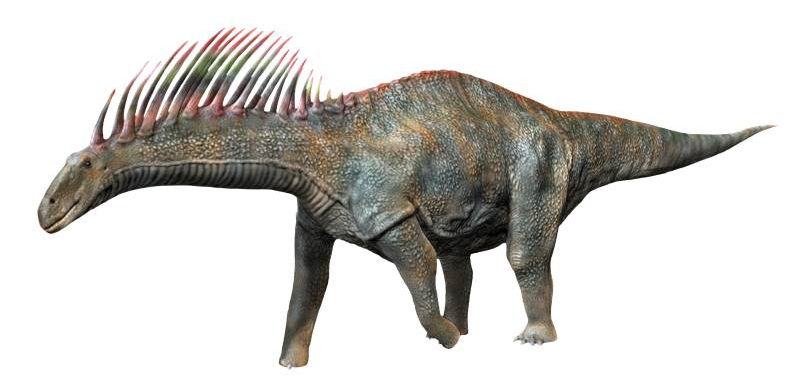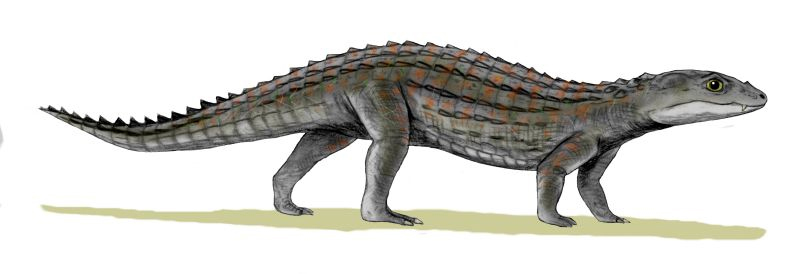|
1991 In Paleontology ...
Plants Angiosperms Arthropods Insects Mollusca Newly named bivalves Archosauromorphs * Sankar Chatterjee's discovery of a possible Triassic bird, ''Protoavis'', if genuine, would push avian origins back almost 70 million years. The find ignites controversy over the connection between dinosaurs and birds. Newly named dinosaurs Data courtesy of George Olshevsky's dinosaur genera list. Newly named birds Genera no longer considered to be birds * ''Protoavis''. The avian status of ''Protoavis'' has since been almost universally rejected by paleontologists. Pterosaurs New taxa Synapsids Non-mammalian References {{portal, Paleontology 1990s in paleontology Paleontology Paleontology (), also spelled palaeontology or palæontology, is the scientific study of life that existed prior to, and sometimes including, the start of the Holocene epoch (roughly 11,700 years before present). It includes the study of fossi ... [...More Info...] [...Related Items...] OR: [Wikipedia] [Google] [Baidu] |
Late Ordovician
The Ordovician ( ) is a geologic period and system, the second of six periods of the Paleozoic Era. The Ordovician spans 41.6 million years from the end of the Cambrian Period million years ago (Mya) to the start of the Silurian Period Mya. The Ordovician, named after the Welsh tribe of the Ordovices, was defined by Charles Lapworth in 1879 to resolve a dispute between followers of Adam Sedgwick and Roderick Murchison, who were placing the same rock beds in North Wales in the Cambrian and Silurian systems, respectively. Lapworth recognized that the fossil fauna in the disputed strata were different from those of either the Cambrian or the Silurian systems, and placed them in a system of their own. The Ordovician received international approval in 1960 (forty years after Lapworth's death), when it was adopted as an official period of the Paleozoic Era by the International Geological Congress. Life continued to flourish during the Ordovician as it did in the earlier Cambrian Pe ... [...More Info...] [...Related Items...] OR: [Wikipedia] [Google] [Baidu] |
La Amarga Formation
The La Amarga Formation is a geologic formation with outcrops in the Argentine provinces of Río Negro, Neuquén, and Mendoza. It is the oldest Cretaceous terrestrial formation in the Neuquén Basin. The type locality is La Amarga Arroyo and China Muerta Hill.Musacchio, 1970 The La Amarga Formation unconformably overlies the marine Agrio Formation of the Mendoza Group. It is in turn overlain by the Lohan Cura Formation, separated by another unconformity. Composition There are three members within the La Amarga Formation. # The oldest is the Puesto Antigual Member, which is approximately thick and consists mainly of sandstone deposited in the channels of a braided river system. Paleosols, or soil deposits, are well-developed. # The Bañados de Caichigüe Member is the next highest, approximately thick. Alternating limestones, shales, and siltstones make up this member, indicating a lacustrine (lake) environment. # Youngest and thickest is the Piedra Parada Member, appro ... [...More Info...] [...Related Items...] OR: [Wikipedia] [Google] [Baidu] |
Barremian
The Barremian is an age in the geologic timescale (or a chronostratigraphic stage) between 129.4 ± 1.5 Ma (million years ago) and 121.4 ± 1.0 Ma). It is a subdivision of the Early Cretaceous Epoch (or Lower Cretaceous Series). It is preceded by the Hauterivian and followed by the Aptian Stage.See Gradstein ''et al.'' (2004) or the online geowhen database (link below) Stratigraphic definitions The original type locality for the Barremian Stage is in the vicinity of the village of Barrême, Alpes-de-Haute-Provence, France. Henri Coquand defined the stage and named it in 1873. The base of the Barremian is determined by the first appearance of the ammonites ''Spitidiscus hugii'' and ''Spitidiscus vandeckii''. The end of the Barremian is determined by the geomagnetic reversal at the start of the M0r chronozone, which is biologically near the first appearance of the ammonite '' Paradeshayesites oglanlensis''. Regional equivalents The Barremian falls in the Gallic epoch, a su ... [...More Info...] [...Related Items...] OR: [Wikipedia] [Google] [Baidu] |
Amargasaurus
''Amargasaurus'' (; "La Amarga lizard") is a genus of sauropod dinosaur from the Early Cretaceous epoch (129.4–122.46 mya) of what is now Argentina. The only known skeleton was discovered in 1984 and is virtually complete, including a fragmentary skull, making ''Amargasaurus'' one of the best-known sauropods of its epoch. ''Amargasaurus'' was first described in 1991 and contains a single known species, ''Amargasaurus cazaui''. It was a large animal, but small for a sauropod, reaching in length. Most distinctively, it sported two parallel rows of tall spines down its neck and back, taller than in any other known sauropod. In life, these spines could have stuck out of the body as solitary structures that supported a keratinous sheath. An alternate hypothesis, now more favored, postulates that they could have formed a scaffold supporting a skin sail. They might have been used for display, combat, or defense. ''Amargasaurus'' was discovered in sedimentary rocks of the La A ... [...More Info...] [...Related Items...] OR: [Wikipedia] [Google] [Baidu] |
Alvarezsaurus Calvoi
''Alvarezsaurus'' (; "Alvarez's lizard") is a genus of alvarezsaurid dinosaur from the Late Cretaceous, living in Argentina approximately 86 - 83 million years ago. It was a small dinosaur, measuring long and weighing approximately . It was found in the Bajo de la Carpa Formation and was named by paleontologist José Bonaparte in 1991 after the historian Don Gregorio Alvarez. The type species is ''A. calvoi''. Description ''Alvarezsaurus'' was a bipedal theropod. Like other lightweight theropods, it had a long tail, and its leg structure suggests that it was a fast runner. The most proximal elements of ''Alvarezsaurus'' caudal vertebrae exhibited ventrally sharp centra and the transerve processes of these vertebrae were sub-triangular and laterodistally directed, features seen in other alvarezsaurids like ''Shuvuuia''. Spinal processes were entirely absent or poorly developed, and each caudal vertebra supported short prezygapophyses. The scapula was visibly curved and proporti ... [...More Info...] [...Related Items...] OR: [Wikipedia] [Google] [Baidu] |
Alvarezsaurid
Alvarezsauridae is a family of small, long-legged dinosaurs. Although originally thought to represent the earliest known flightless birds, they are now thought to be an early diverging branch of maniraptoran theropods. Alvarezsaurids were highly specialized. They had tiny but stout forelimbs, with compact, bird-like hands. Their skeletons suggest that they had massive breast and arm muscles, possibly adapted for digging or tearing. They had long, tube-shaped snouts filled with tiny teeth. They have been interpreted as myrmecophagous, adapted to prey on colonial insects such as termites, with the short arms acting as effective digging instruments to break into nests. ''Alvarezsaurus'', the type genus of the family, was named for the historian Gregorio Álvarez. History of study Bonaparte (1991) described the first alvarezsaurid, ''Alvarezsaurus calvoi'', from an incomplete skeleton found in Patagonia, Argentina. Bonaparte also named a family, Alvarezsauridae, to contain it. He a ... [...More Info...] [...Related Items...] OR: [Wikipedia] [Google] [Baidu] |
Bajo De La Carpa Formation
The Bajo de la Carpa Formation is a geologic formation of the Neuquén Basin that crops out in northern Patagonia, in the provinces of Río Negro and Neuquén, Argentina. It is the oldest of two formations belonging to the Río Colorado Subgroup within the Neuquén Group. Formerly, that subgroup was treated as a formation, and the Bajo de la Carpa Formation was known as the Bajo de la Carpa Member.Sánchez ''et al.'', 2006 At its base, this formation conformably overlies the Plottier Formation of the older Río Neuquén Subgroup, and it is in turn overlain by the Anacleto Formation, the youngest and uppermost formation of the Neuquén Group. The Bajo de la Carpa Formation can reach in thickness in some locations, and consists mainly of sandstones of various colors, all of fluvial origin, with thin layers of mudstone and siltstone in between. Geological features such as geodes, chemical nodules, impressions of raindrops, and paleosols (fossil soils) are commonly found in this ... [...More Info...] [...Related Items...] OR: [Wikipedia] [Google] [Baidu] |
Santonian
The Santonian is an age in the geologic timescale or a chronostratigraphic stage. It is a subdivision of the Late Cretaceous Epoch or Upper Cretaceous Series. It spans the time between 86.3 ± 0.7 mya (million years ago) and 83.6 ± 0.7 mya. The Santonian is preceded by the Coniacian and is followed by the Campanian.Gradstein ''et al.'' (2004) Stratigraphic definition The Santonian Stage was established by French geologist Henri Coquand in 1857. It is named after the city of Saintes in the region of Saintonge, where the original type locality is located. The base of the Santonian Stage is defined by the appearance of the inoceramid bivalve ''Cladoceramus undulatoplicatus''. The GSSP (official reference profile) for the base of the Santonian Stage is located near Olazagutia, Spain; it was ratified by the Subcommission on Cretaceous Stratigraphy in 2012. The Santonian's top (the base of the Campanian Stage) is informally marked by the extinction of the crinoid '' Marsupites tes ... [...More Info...] [...Related Items...] OR: [Wikipedia] [Google] [Baidu] |
Jose Bonaparte
Jose is the English transliteration of the Hebrew and Aramaic name ''Yose'', which is etymologically linked to ''Yosef'' or Joseph. The name was popular during the Mishnaic and Talmudic periods. * Jose ben Abin * Jose ben Akabya *Jose the Galilean *Jose ben Halafta *Jose ben Jochanan *Jose ben Joezer of Zeredah * Jose ben Saul Given name Male * Jose (actor), Indian actor * Jose C. Abriol (1918–2003), Filipino priest * Jose Advincula (born 1952), Filipino Catholic Archbishop * Jose Agerre (1889–1962), Spanish writer * Jose Vasquez Aguilar (1900–1980), Filipino educator * Jose Rene Almendras (born 1960), Filipino businessman * Jose T. Almonte (born 1931), Filipino military personnel * Jose Roberto Antonio (born 1977), Filipino developer * Jose Aquino II (born 1956), Filipino politician * Jose Argumedo (born 1988), Mexican professional boxer * Jose Aristimuño, American political strategist * Jose Miguel Arroyo (born 1945), Philippine lawyer * Jose D. Aspiras (1924–199 ... [...More Info...] [...Related Items...] OR: [Wikipedia] [Google] [Baidu] |
Alvarezsaurus
''Alvarezsaurus'' (; "Alvarez's lizard") is a genus of alvarezsaurid dinosaur from the Late Cretaceous, living in Argentina approximately 86 - 83 million years ago. It was a small dinosaur, measuring long and weighing approximately . It was found in the Bajo de la Carpa Formation and was named by paleontologist José Bonaparte in 1991 after the historian Don Gregorio Alvarez. The type species is ''A. calvoi''. Description ''Alvarezsaurus'' was a bipedal theropod. Like other lightweight theropods, it had a long tail, and its leg structure suggests that it was a fast runner. The most proximal elements of ''Alvarezsaurus'' caudal vertebrae exhibited ventrally sharp centra and the transerve processes of these vertebrae were sub-triangular and laterodistally directed, features seen in other alvarezsaurids like ''Shuvuuia''. Spinal processes were entirely absent or poorly developed, and each caudal vertebra supported short prezygapophyses. The scapula was visibly curved and proporti ... [...More Info...] [...Related Items...] OR: [Wikipedia] [Google] [Baidu] |
Protoavis
''Protoavis'' (meaning "first bird") is a problematic taxon known from fragmentary remains from Late Triassic Norian stage deposits near Post, Texas. Much controversy remains over the animal, and there are many different interpretations of what ''Protoavis'' actually is. When it was first described, the fossils were described as being from a primitive bird which, if the identification is valid, would push back avian origins some 60-75 million years. The original describer of ''Protoavis texensis'', Sankar Chatterjee of Texas Tech University, interpreted the type specimen to have come from a single animal, specifically a 35 cm tall bird that lived in what is now Texas, USA, around 210 million years ago. Though it existed far earlier than ''Archaeopteryx'', its skeletal structure is more bird-like. ''Protoavis'' has been reconstructed as a carnivorous bird that had teeth on the tip of its jaws and eyes located at the front of the skull, suggesting a nocturnal or crepuscular ... [...More Info...] [...Related Items...] OR: [Wikipedia] [Google] [Baidu] |





